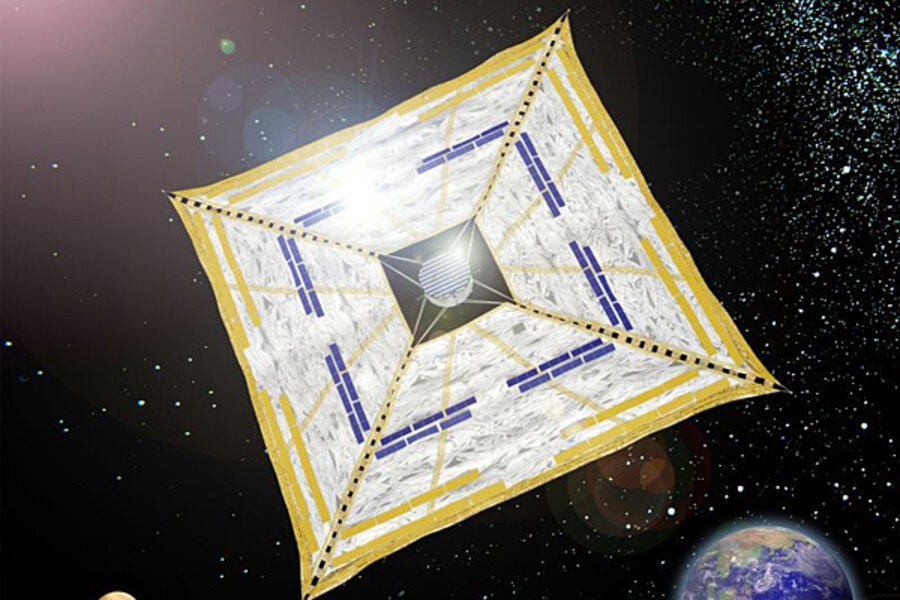Solar sail captures massive space explosion
Loading...
A camera riding on the world's first deep space solar sail has managed to observe a violent gamma-ray burst — one of the most powerful explosions in the universe, Japanese space officials have announced.
The Ikaros solar sail detected the first gamma-ray burst with its onboard GAmma-ray burst Polarized light detector (GAP) on July 7, Japan Aerospace Exploration Agency (JAXA) said in an announcement.
Gamma-ray bursts are the dying explosion of large stars that have run out of fuel. The collapsing star cores can form either black holes or neutron stars, and emit an intense burst of high-energy gamma-rays.
These gamma-ray bursts, as they're called, are some of the brightest explosions in space. One gamma-ray burst, which was observed by NASA's Swift satellite June 21, was so powerful and bright that it temporarily blinded the space observatory, NASA officials said.
Satellites in space routinely keep watch for powerful gamma-ray bursts, but the GAP instrument on Ikaros is designed to make the first-ever detection of polarized light from the cosmic explosions.
"Polarized light observations will contribute to elucidate the magnetic structure and the radiation mechanism of gamma-ray bursts, thus they are expected to greatly help solve the mystery of the death of massive stars and the birth of black holes," JAXA officials said.
The GAP can detect gamma-rays coming toward Ikaros from all directions, but can only carry out its polarized light analysis when the gamma-rays come in from the backside of the solar sail. The first gamma-ray burst detected did not allow for such an analysis.
Japan's Ikaros solar sail has months of sailing ahead, and scientists calculate that about 20 percent of gamma-ray bursts observed by GAP should allow for polarized light observations.
The solar sail launched in May alongside the Venus-bound orbiter Akatsuki. It achieved a world first by deploying its solar sail in June, and then became the first space vehicle to harness sunlight for propulsion in deep space.
But JAXA scientists hope that the solar sail technology demonstration may also yield new findings about gamma-ray bursts.
Ikaros recently represented the toast of the town at a three-day solar sail symposium held in New York City this week that ends today.





